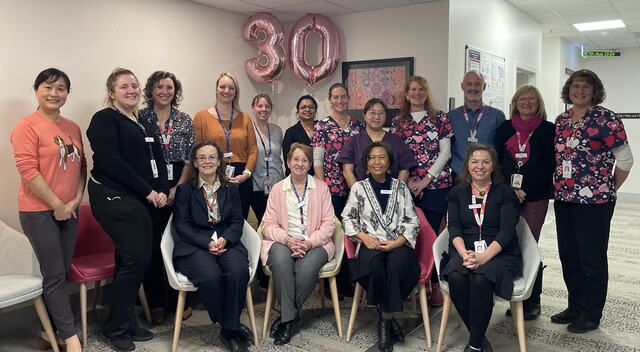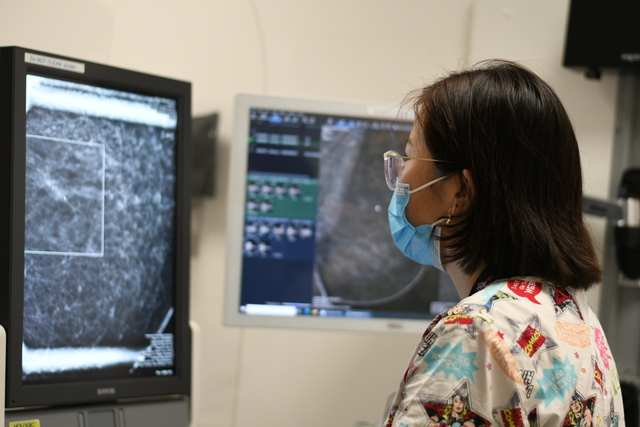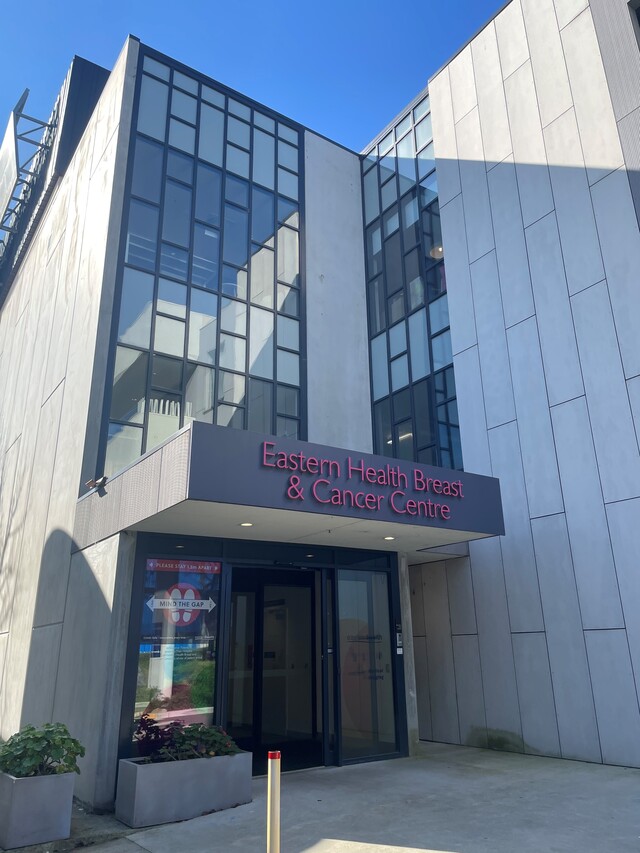Over a period of three decades, Eastern Health’s Maroondah Breast and Cancer Centre has screened 10,000 people for an early detection diagnosis per year.
Celebrating 30 years of the BreastScreen service also means celebrating the over 300,000 lives impacted by this technology.
Maroondah BreastScreen associate program director Michelle Giles said the changes since its inception three decades ago have been immense.
“Maroondah commenced operations at 24 Grey Street in a small weatherboard house in January 1994. The first consumer was screened by our then Designated Radiographer Liz Sundram. The client list was delivered by a courier on a floppy disc and left under the doormat,” she said.
“The service started with film screening before progressing to computer radiography and then full view digital mammography.
“Today, we operate out of a state-of-the-art Breast and Cancer Centre at Eastern Health Maroondah with additional fixed sites.
“Our mobile van, which started in October 1994, continues to serve regional areas.”
The program is focused on the early detection of breast cancer in clients without symptoms and the Centre screens 10,000 consumers per year.
Its 30-year journey has been marked by significant technological advancements. One area of focus has been the introduction of new 3D imaging technology.
“Maroondah BreastScreen was the first BreastScreen service in Australia to offer tomosynthesis (3D imaging) in the BreastScreen Assessment setting. This project led to the rollout of tomosynthesis in the BreastScreen assessment setting across Victoria,” Ms Giles said.
“Another area of focus has been providing consumers with information about modifiable breast cancer risk factors like alcohol consumption. This project is a collaboration between Eastern Health Turning Point, Maroondah BreastScreen, and BreastScreen Victoria.”
Over the past 30 years, the service has offered approximately 930,000 appointments and the team are eagerly anticipating their millionth appointment in 2025.
“Early detection provides clients with a better prognosis, and we strongly encourage women aged between 50 and 74 to screen every two years so any change in their breast tissue can be detected as early as possible.”









